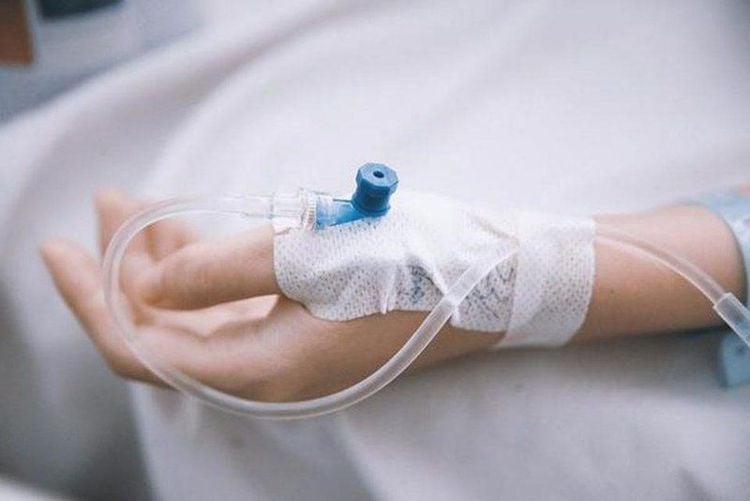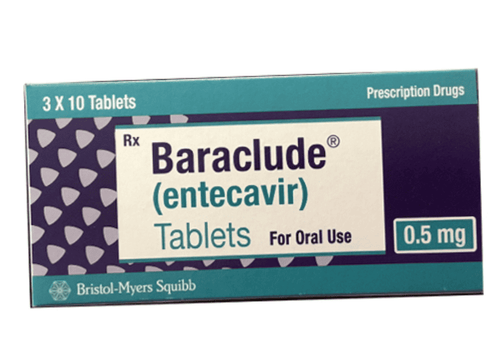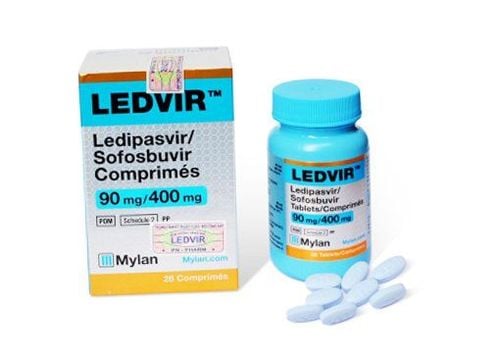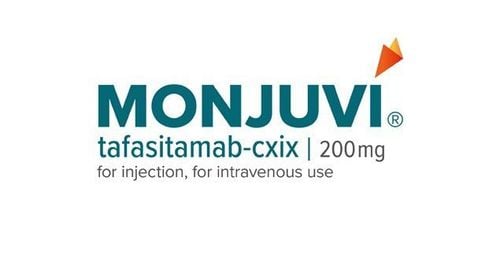This is an automatically translated article.
Post by MSc. Pharmacist Nguyen Le Trang - Faculty of Pharmacy - Vinmec Times City International Hospital
Obinutuzumab is an anti-CD20 monoclonal antibody, in combination with chlorambucil for the treatment of previously untreated chronic lymphocytic leukemia, in combination with bendamustis in the treatment of follicular lymphoma after failure of a rituximab-containing regimen.
1. What does Obinutuzumab do?
Brand name: Gazyva
Obinutuzumab is an anti-CD20 monoclonal antibody. The CD20 antigen is expressed on the surface of mature B lymphocytes and pre-B lymphocytes. Upon binding to CD20, obinutuzumab activates complement-mediated cytotoxicity, via antibody, resulting in cell death. .
2. Indications and dosage of Obinutuzumab
In combination with chlorambucil for treatment of previously untreated chronic lymphocytic leukemia: 100mg day 1, 900mg day 2 cycle 1, 1000mg day 8 and 15 cycle 1, 1000mg on day 1 from cycle 2 to 6. In combination with bendamustis in the treatment of follicular lymphoma after failure of rituximab-containing regimens: 1000 mg day 1, 8, 15 cycle 1 and 1000 mg day 1 cycle 2 to 6 or 8, then 1000 mg every 2 months until 2 years. In combination with chemotherapy in patients with stage III, IV, or bulk-type follicular lymphoma who respond to partial remission.
3. How to use the drug Obinutuzumab
Obinutuzumab is administered through an intravenous infusion, not directly intravenously, without the use of a filter.
Pre-infusion drugs: All patients received oral/intravenous paracetamol 650-1000 mg, antihistamines (diphenhydramine 50mg) and corticosteroids (equivalent to methylprednisolone 80mg). Initial infusion rate is 25 mg/h over 4 hours on day 1, increased to 50 mg/h on day 2 if no reaction occurs, may increase by 50 mg/h every 30 minutes, maximum rate not to exceed 400 mg/h GH.

4. Notes when using Obinutuzumab
Special care should be taken when using Obinutuzumab.
Infusion reactions when using Obinutuzumab: Usually mild/moderate. If the reaction occurs at Grade 1 – 2: Reduce the rate of infusion and treat symptomatically, the infusion can be continued if symptoms resolve and if the patient does not develop subsequent reactions, an increase in infusion may be possible. old speed. If a Grade 3 reaction occurs for the first time, discontinue the drug temporarily and treat symptomatically. Depending on the patient's recovery, the drug may be re-infused at a rate not exceeding 1⁄2 of the infusion rate causing the reaction. response. If the reaction still occurs for the second time, Grade 3, do not re-use Obinutuzumab.
Virus B reactivation can occur with the use of monoclonal antibodies that directly inhibit CD20, leading to severe hepatitis, even liver failure and death. HbsAg , HbcAb , HbsAb and hepatitis B markers should be checked before taking obinutuzumab, during treatment and for several months after stopping obinutuzumab. Discontinue Obinutuzumab if viral hepatitis develops, and start antiretroviral therapy at the same time.
Progressive multifocal leukoencephalopathy: May present, even lead to death, in patients with new or worsening neurological, behavioral, and cognitive symptoms.
Tumor lysis syndrome: Patients with large tumors, or large lymphocyte counts (> 25000/m2), or severe renal impairment should be considered for tumor lysis syndrome prophylaxis with adequate fluids. or add allopurinol/rasburicase.
To ensure safety and avoid side effects of Obinutuzumab, patients should read the instructions carefully before using or as directed by the doctor or pharmacist.
Please dial HOTLINE for more information or register for an appointment HERE. Download MyVinmec app to make appointments faster and to manage your bookings easily.














